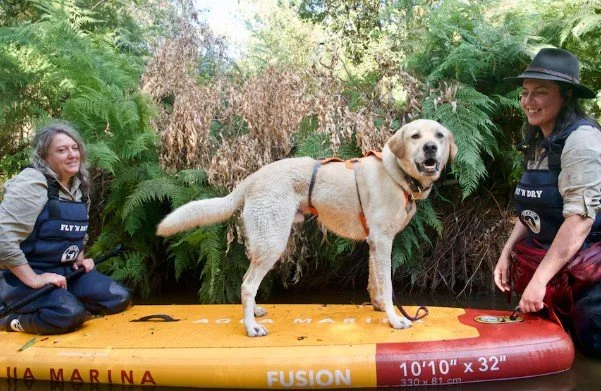Dogs Detect Long Covid
It’s been known for some time that dogs can identify the presence of the SARS-CoV-2 virus with a sniff, but now we know a dog’s olfactory ability is so precise it can detect even long covid cases. The new research is published in Frontiers in Medicine.
Scientists at the University of Veterinary Medicine in Hannover, Germany had nine dogs stick their schnozzes into scent holes containing samples of long-covid patients’ saliva, sweat, and urine. When the dogs took a sniff of negative sample excretions, they could correctly suss out 85 percent of the long-covid samples.
The researchers believe that the disease-identifying odor detected by dogs is determined by a specific pattern of volatile organic compounds. “VOCs are produced by cell metabolism and released with breath, urine, saliva, blood, sweat and other body fluids,” they write. “As viruses have no metabolism, the common hypothesis is that viruses change the metabolism of the infected host and therefore generate a special VOC pattern.”
Whatever that specific pattern is, the dogs are on it. Extraordinary scent abilities in dogs evolved for both hunting prey and for alerting a pack to predators. This highly refined skill is helping humans detect infectious and non-infectious diseases including cancers, malaria, bacterial and viral infections.
Humans have a mere 5-8 million olfactory receptor cells, but dogs have 40 times that, or about 200-300 million. Need a visual? As the researchers put it, “A dog is able to detect a drop of liquid in 50,000,000 liters of water, which corresponds to 20 Olympic-sized swimming pools.”
Photo credit: Sebastian Meller







